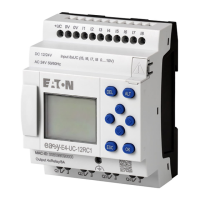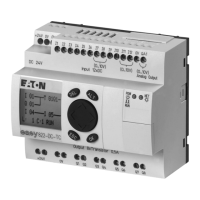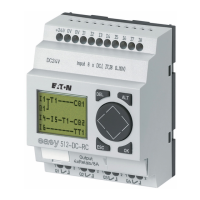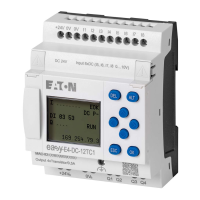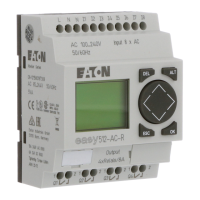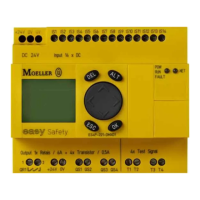List of Figures
Fig. 243: Acyclical Modbus TCP request tab 533
Fig. 244: Wiring the function block coils 536
Fig. 245: Wiring of the function block contact 536
Fig. 246: Parameters on the display 537
Fig. 247: Acyclical Modbus RTU request - Parameters tab 541
Fig. 248: Overview of how function codes are used 542
Fig. 249: Acyclical Modbus master request - 2nd write request tab 544
Fig. 250: Function block outputs tab 545
Fig. 251: Signal diagram of frequency counter 546
Fig. 252: Acyclical Modbus RTU request tab 547
Fig. 253: Acyclical Modbus client request tab 548
Fig. 254: Wiring the function block coils 558
Fig. 255: Setting of the parameters 558
Fig. 256: Input and output states being passed between the main program
and interrupt program 563
Fig. 257: easySoft 8 Main program Pulse counter with external direction 569
Fig. 258: easySoft 8 Interrupt program Pulse counter with external direction 570
Fig. 259: easySoft 8 Main program, two counter inputs 571
Fig. 260: easySoft 8 Interrupt program, two counter inputs 571
Fig. 261: easySoft 8 Main program Incremental counter 572
Fig. 262: easySoft 8 Interrupt program Incremental counter 572
Fig. 263: easySoft 8 Main program Frequency measurement 573
Fig. 264: easySoft 8 Interrupt program Frequency measurement 573
Fig. 265: Input and output states being passed between the main program
and interrupt program 575
Fig. 266: easySoft 8 Main program Slope 579
Fig. 267: easySoft 8 Interrupt program Slope 579
Fig. 268: Input and output states being passed between the main program
and interrupt program 581
Fig. 269: easySoft 8 Main program Time-controlled 587
Fig. 270: easySoft 8 Interrupt program Time-controlled 587
Fig. 271: Create user function block 590
Fig. 272: Configure user function block 593
Fig. 273: Screenshot of Retention section that can be found in the System
594
easyE402/24 MN050009ENEaton.com
863
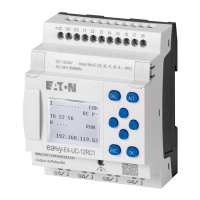
